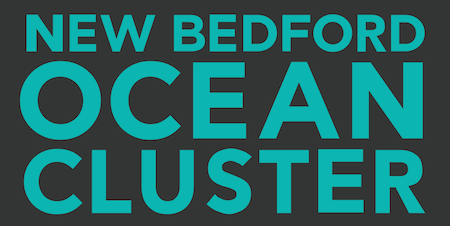The #NBOC offshore wind glossary
By Steven Froias | For the New Bedford Ocean Cluster
There has been a lot of excitement in the greater New Bedford region – and beyond – since the steady stream of great news about the growing momentum of the offshore wind energy industry in this city and, indeed, in the United States.
Yet, the New Bedford Ocean Cluster recognizes that it can be hard to wrap your brain around all these new bright shiny objects at once. Especially when an entirely new industry arrives with an entirely new vocabulary.
No worries. We’re here to help.
From time to time, we’ll compile and share with you the terminology you need to know. Never enough to drag you under, but just enough to keep you afloat as this new chapter of maritime history unfolds.
Now, some of the lingo and jargon may be second-hand to folks who already work in the industry or have read up on the subject. But we’re guessing that just as many more have no idea what, exactly, is the Jones Act. Or what GWO stands for.
Neither did most of us until we got involved in the promise of renewable energy. Now that it’s happening right from our own shores, in fact from the very Port of New Bedford and the New Bedford Marine Commerce Terminal, it’s time we share the love.
So, we’ll begin with a few words or terms regarding Offshore Wind – frequently abbreviated to OSW – to get you aloft and blowing in the wind. We’ll add more in future posts and eventually compile them all together into the #NBOC glossary on this website – the first of many resources you can expect to see going forward.
THE JONES ACT: Has nothing to do with Davy Jones Locker – but everything to do with keeping ship building in the United States strong. The Jones Act requires that all vessels carrying goods between two U.S. points be American-built, -owned, -crewed and -flagged. In the OSW industry (see what we did there? Hope you were paying attention above!) the Jones Act means purpose-built vessels in the U.S. to help facilitate the construction of OSW farms.
GWO: It’s not something stamped on organic food to certify that it is non-GMO. (That’s Genetically Modified Organism.) Rather GWO refers to the offshore wind training certificate you receive after a course of study. It stands for Global Wind Organization, a group of industry experts who, since 2012, has set the standard for people working in the wind industry, both onshore and offshore. You can, in fact, become GWO certified with Bristol Community College’s National Offshore Wind Institute (NOWI) program.
INTERCONNECTION: Though it sounds like the title of the latest Chris Nolan blockbuster, you won’t find Leonardo DiCaprio becoming interconnected. (That would be “Inception.”) For offshore wind generation projects, interconnection involves the transport of electricity generated offshore to onshore landings, known as points of interconnection (POI).
INDEPENDENT SYSTEM OPERATOR: From a POI, electricity is injected into the grid, which is operated by an Independent System Operator (ISO). That’s an independent and federally regulated entity that coordinates regional transmission to ensure non-discriminatory access to the electric grid and a reliable electricity system.
We’ll stop here before we all begin to feel a bit like Leo in Inception. Upside down and turned all around, not unlike an offshore wind turbine blade!
Until next time, go forth and impress your friends and family with OSW cocktail chatter, courtesy of the New Bedford Ocean Cluster.
The New Bedford Ocean Cluster (NBOC) is a newly established 501(c)(3) non-profit organization created to serve the maritime business community in the greater New Bedford region. The NBOC’s mission is to leverage New Bedford’s coastal position, marine knowledge base, and landside capacity to drive employment and wealth creation for New Bedford residents. This shall be done through a dynamic approach combining recruitment of targeted businesses, creation of unique economic infrastructure, workforce development, and support for homegrown ocean economy companies.
